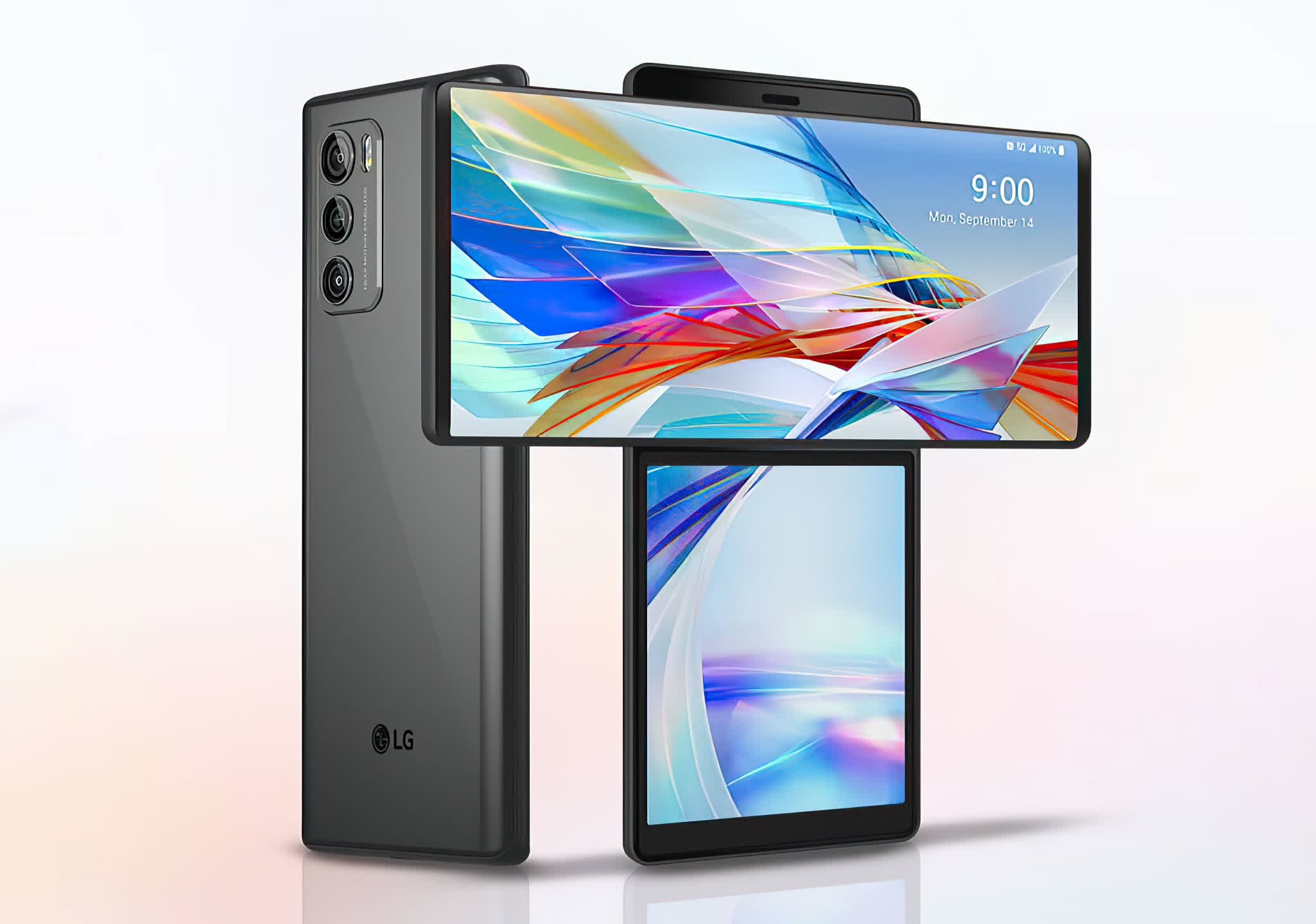Forward-looking: LG took a different approach than most when it comes to its new dual-screened phone, which is both interesting and concerning. Whether it lives up to expectations will depend a lot on price and its ability to withstand many thousands of display swivels.
LG has a history of producing some unusual designs for its smartphones, such as the LG Optimus 3D for people who wanted a glasses-free 3D experience, or the ill-fated LG G5 which was supposed to usher in a new era of modular, easily repairable smartphones, except that it lacked any compelling add-on modules.
More recently, the South Korean company shied away from crafting smartphones with foldable displays, and instead chose to experiment with dual-screened devices such as the Velvet, the V60, and G8X ThinQ.
After months of leaks and rumors, LG has finally unveiled the Wing, a smartphone with a swivelling display that reveals another display you can use to multitask. This is part of the company's new Explorer Project lineup, which is supposed to redefine usability and "breathe new life into what makes a smartphone."

The main and secondary screens are both OLED, and measure 6.8-inch and 3.9-inch diagonally. Twisting the larger screen reveals the smaller one which can be used in three different orientations. You can still use the phone just like any other when the swivel mechanism is closed, but LG believes you'll come to appreciate the added screen real estate without the drawbacks of a larger footprint and heft that comes with devices like Samsung's Galaxy Z Fold or Microsoft's Surface Duo.
Once developers take advantage of this it won't be just about having two apps in foreground at the same time. For instance, the pre-installed Gallery app pushes UI elements such as thumbnails and editing controls onto the smaller screen so that the image can take up the entire surface of the larger screen. Similarly, streaming apps could implement playback controls for the second screen.
The internals are standard for a premium phone, with the customary Snapdragon 765G mobile platform paired with 8GB of RAM and 256GB of storage expandable via a microSD slot. The Wing comes equipped with a 5G modem supporting both sub-6Ghz and mmWave networks, which is a definite plus. The battery has a 4,000 mAh capacity, which should cover the added energy expense from the secondary display.

If you're worried about durability, LG says it tests its devices to withstand at least 200,000 swivels, and they come with IP54 water and dust resistance. But more impressively, the device weighs 260 grams and is just under 11 mm thin, which should make it more pocketable than other dual-screened devices out there.
Just like Vivo, LG is opting for a pop-up selfie camera with a 16-megapixel sensor, while the rear camera module consists of a 64-megapixel main shooter, a 12-megapixel ultra-wide, and a 13-megapixel wide sensor. And thanks to the weird form factor, you can use the Swivel Mode to take advantage of a "Gimbal Motion Camera" feature, complete with the same joystick and controls found on a real gimbal displayed on the second screen.
There is a glaring issue with LG's new smartphone, though. We know nothing about availability nor price, and depending on how the economic situation evolves, the Wing could end up in the large graveyard of funky experiments that never gained any real traction.